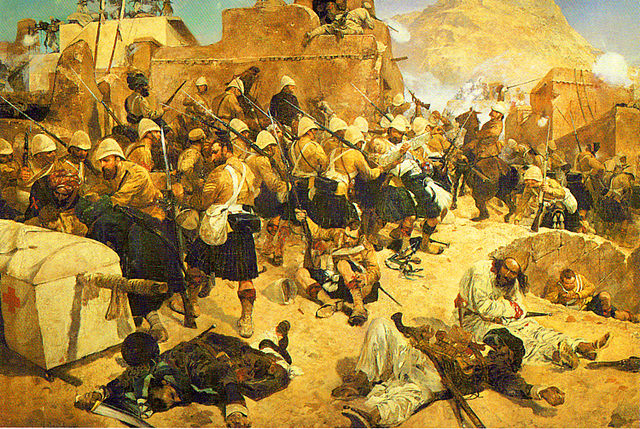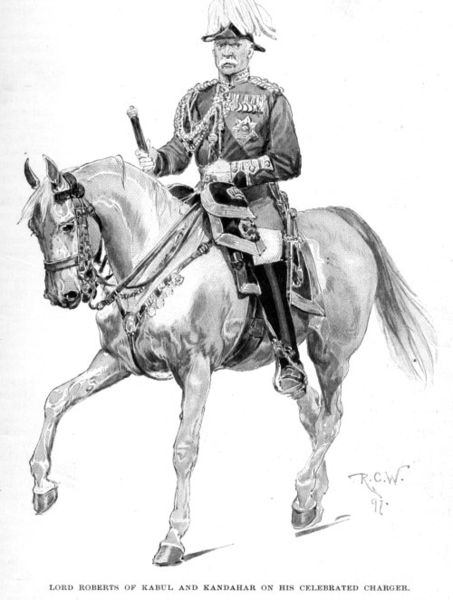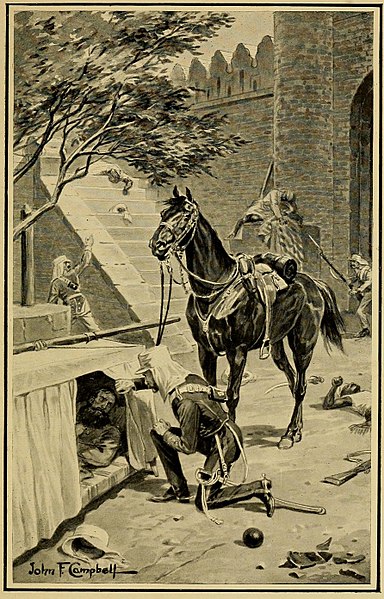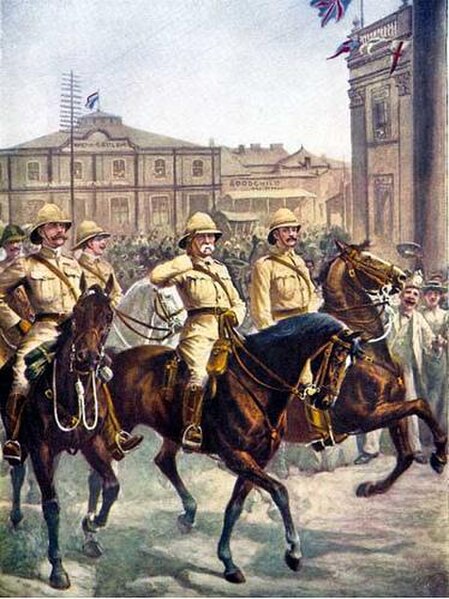Battle of Kandahar (1880)
The Battle of Kandahar, 1 September 1880, was the last major conflict of the Second Anglo-Afghan War. The battle in southern Afghanistan was fought between the British forces under command of General Roberts and the Afghan forces led by Ayub Khan. It ended with a British victory.
Kandahar: 92nd Highlanders storming Gundi Mulla Sahibdad, Richard Caton Woodville
9th Lancers on the march to Kandahar, water-colour by Orlando Norie. The troops would march in the early morning to avoid the full heat of the sun, halting a few minutes every hour. In this way, the column managed to cover up to 20 miles a day
"Lord Roberts of Kabul and Kandahar on his Celebrated Charger," by Richard Caton Woodville (Harper's Magazine, European Edition, December 1897, p27). For his services, General Roberts received the thanks of Parliament, and was appointed both Knight Grand Cross of the Order of the Bath (GCB) and Companion of the Order of the Indian Empire (CIE) in 1880, becoming a baronet the following year
British and Sikh troops at Kandahar 1880. Artillery support was frequently ineffective and on occasions the Afghan artillery proved to be better equipped than the British
Frederick Roberts, 1st Earl Roberts
Field Marshal Frederick Sleigh Roberts, 1st Earl Roberts, was a British Victorian era general who became one of the most successful British military commanders of his time. Born in India to an Anglo-Irish family, Roberts joined the East India Company Army and served as a young officer in the Indian Rebellion during which he was awarded the Victoria Cross for gallantry. He was then transferred to the British Army and fought in the Expedition to Abyssinia and the Second Anglo-Afghan War, in which his exploits earned him widespread fame. Roberts would go on to serve as the Commander-in-Chief, India before leading British Forces for a year during the Second Boer War. He also became the last Commander-in-Chief of the Forces before the post was abolished in 1904.
Field Marshal Roberts as Commander-in-Chief of the Forces
Lieutenant Frederick Roberts finding the mortally wounded General Nicholson by the Kashmir Gate during the Siege of Delhi.
Roberts painted by George Frederic Watts
Lord Roberts enters Kimberley after the relief of the besieged city, February 1900








